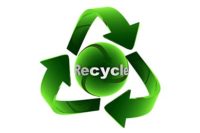Companies across all industries are often expected to become environmental stewards and leaders in implementing and demonstrating environmentally sustainable practices. One means of doing this is by achieving zero landfill status while creating a business model that is both profitable and sustainable.
From product design to packaging, every company has the responsibility and the opportunity to make a difference to reduce its environmental footprint, eliminate waste, practice lean business processes and reduce resource consumption.
Zero landfill certification is part of a sustainability initiative that grows from employees wanting to be good stewards of resources. Rather than being a top-down initiative, employees through all levels and locations of the company should be encouraged to regularly share their insights for sustainability opportunities.
The road to certification can at first seem quite challenging; by engaging employees and reviewing the three “R’s” (recycling, reusing and/or reducing the way waste is handled).
To help achieve zero landfill status, it’s best to use a 5-step approach that helps customers and suppliers evaluate waste reduction and disposal opportunities:
1. Analyze the facility’s waste.
2. Establish internal communication and employee involvement.
3. Develop a plan.
4. Evaluate results and share successes.
5. Extend benefits beyond the company’s bottom line.
Analyze the facility’s waste
Regardless of facility or location, the first step is to identify the waste being generated.
Companies may already be recycling cardboard, but what about plastic shrink-wrap or zip ties? Even seemingly small or insignificant items can add up to a lot of waste over time. And, it’s not just the debris from the warehouse to consider. Kitchen and bathroom waste like food scraps and disposable plates and utensils are all opportunities to divert landfill waste. Paper towels may not seem like a big thing, but multiple restroom facilities yield a high volume of waste. Rather than management guessing where the waste comes from, working with a team of employees from various departments can help identify opportunities from across the facility based on ideas from personnel most familiar with those operations.
Develop a plan
When you know what waste you’re generating – both in content and quantity – it’s much easier to devise a plan and classify the wastethat can be eliminated, reused or recycled. For instance, widely accepted materials like aluminum, paper and some plastics are typically easy items to remove from a waste-to-landfill list using local recycling centers.
Since industrial items such as plastics like shrink wrap, plastic caps and wire ties can be more difficult to divert through a typical recycling program, try working with local companies to find opportunities to divert these wastes. For example, one partner may use your hard-to-recycle plastics to produce items like parking blocks.
Establish internal communication and employee involvement
Employees are an absolutely vital part of any zero-waste-to-landfill initiative.
A strong team of passionate employees can spread the word to others and foster a culture focused on sustainable practices where recycling and waste reduction grows. A large part of any company’s success can be attributed to employees reporting sustainability opportunities and offering suggestions for implementation.
Often, the folks on the front lines of manufacturing and at sales and service locations can provide great ideas that help achieve reduction goals.
For employee involvement to be successful, it is important to have an established open channel for internal communication. For instance, create a Continuous Improvement Program where employees can communicate to management, which encourages employees to submit suggestions.
Evaluate results and share successes
Despite the seemingly linear approach of a 5-step process, evaluating results and assessing needs is a continuous effort. Recyclers and sustainability partners can change their rules and procedures, and evolving operational processes can create new waste disposal needs.
Conferences and events with a sustainability focus, such as the American Manufacturing Excellence International Conference, produced by the Association for Manufacturing Excellence, Rolling Meadows, Ill., or the Sustainable Manufacturer Network, an affiliate of the Fabricators & Manufacturers Association, International, Rockford, Ill., provide an opportunity to share successes with the industry and learn best practices that are working for other companies.
More importantly, communicate any successes with employees, customers and the community. This can be done through company newsletters, memos, website content, plant tours and press releases.
Extend benefits beyond the company’s bottom line
It’s true that there can be financial savings when waste reduction is accomplished. However, changes and possible investments may be required to make that happen, especially during the first steps to a zero landfill certification. Sustainability efforts like zero landfill status are the right thing to do from both a business case and for the greater good of society.
We owe it to the communities where we operate, our employees, customers and future generations to minimize landfill space and minimize our environmental footprint. It’s good for people, good for business and good for the environment.



